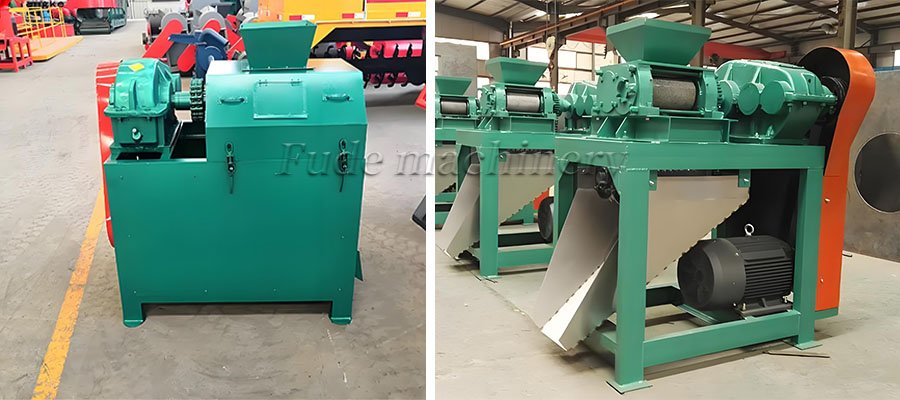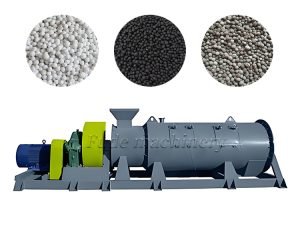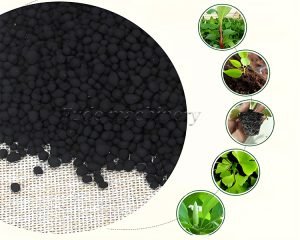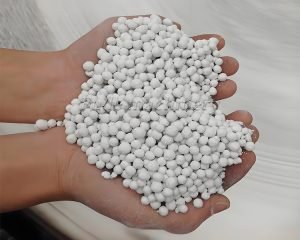Can roller press granulation improve the strength uniformity of biofertilizer pellets?
Producing high-quality biofertilizer is more than just mixing raw materials — granule strength, shape, and uniformity all influence application efficiency, transportation, and storage. Among many granulation technologies, the roller compactor granulator stands out for its ability to produce strong, uniform granules without the need for drying or binder additives.
- Mechanical strength ensures that granules don’t break during packaging, shipping, or application.
- Uniform size promotes consistent nutrient release and precise field application using modern machinery.
- Poor-quality granules lead to product loss, dust issues, and uneven crop nutrition.
How Roller Compaction Works
- Uses dry granulation: powder materials are compressed between two counter-rotating rollers.
- The resulting flakes are then crushed and screened into uniform granules.
- No need for high moisture or thermal drying — ideal for heat-sensitive and organic materials. This can save you the cost of biofertilizer production to a great extent!
Why Roller Compactor Granules Are Superior
- ✅Higher bulk density – Granules are tightly compacted, improving nutrient concentration per unit.
✅ Strong mechanical strength – Compression ensures durability in handling and application.
✅ Adjustable particle size – Screening systems allow you to control final granule range (typically 2–5mm).
✅ Low dust content – Reduced fines make it safer and cleaner to store and apply.
Materials That Benefit Most
- Fermented organic matter (compost, digestate)
- Livestock manure powder
- Agricultural waste powder (straw, husk, etc.)
- Microbial inoculants or biochar blends
These materials often have poor binding properties, making roller compaction ideal compared to wet granulation methods. If you are not sure whether the raw materials are suitable, you can consult Fude Machinery.
Technical features of roller presses
High efficiency and reliability: Roller pelletizing is an efficient and reliable pellet preparation technology with high production efficiency, low cost and large-scale automated production.
High pellet quality:
Controllable shape and size: The shape and size of pellets can be controlled during the rolling granulation process to meet the needs of different applications.
Strong density and bonding: Due to the high speed rotation and continuous extrusion of the rollers, the pellets from roller pelletizing have higher density, stronger bonding and more uniform particle size distribution, thus improving the quality and stability of the product.
Environmental protection and economy: this technology can process different raw materials into granules without adding any chemical substances (in some cases, adding appropriate amount of wetting agent can improve the granulation conditions), avoiding possible chemical reactions and toxicity problems, product purity is guaranteed, and reduce the production cost.
Wide range of application: it can be widely used in chemical, pharmaceutical, food, building materials, mining and metallurgy, environmental protection, printing and dyeing, ceramics, rubber, plastic and other fields.
Advantages of roller press granulation
Roller press granulation offers multiple advantages:
- Energy Efficiency: It granulates at room temperature, eliminating the need for drying and thus cutting energy use.
- Binder-Free: Leverages material’s intermolecular forces for granulation, simplifying the process, reducing costs, and avoiding binder-related issues.
- Lower Investment: No drying process means reduced investment. Simple process and low return ratio further cut costs.
- Flexible Raw Materials: Adaptable to various materials and allows quick product formula changes, enabling diverse product production.
- High-Quality Granules: Produces dense, well-bonded granules with uniform size, improving product quality. Pressure adjustment tailors granule strength.
- Eco-Friendly: No three-waste emissions, only electricity consumption, aligning with environmental standards and reducing dust pollution.
- High Automation: Compact, easy-to-maintain equipment with variable frequency control enables one-person multi-machine operation, reducing labor intensity.
For manufacturers seeking consistent granule quality without high energy consumption, roller press pelletizer offer a balanced, cost-effective solution.
High granule strength and uniformity help meet both agronomic needs and commercial packaging standards — giving your product a professional edge in the competitive biofertilizer market.
 Organic fertilizer equipment,organic fertilizer production line,organic fertilizer equipment factory
Organic fertilizer equipment,organic fertilizer production line,organic fertilizer equipment factory





